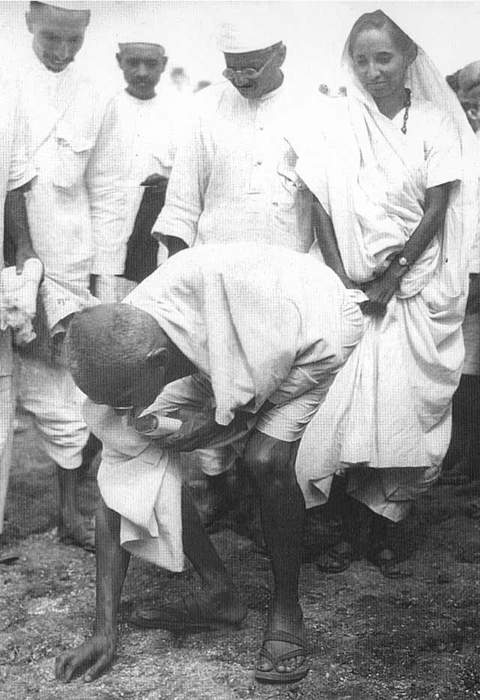Salt March
1930 Indian protest led by Mahatma Gandhi
Salt March ▸ Facts ▸ Comments ▸ News ▸ Videos

The Salt march, also known as the Salt Satyagraha, Dandi March, and the Dandi Satyagraha, was an act of nonviolent civil disobedience in colonial India, led by Mahatma Gandhi. The 24-day march lasted from 12 March 1930 to 5 April 1930 as a direct action campaign of tax resistance and nonviolent protest against the British salt monopoly. Another reason for this march was that the Civil Disobedience Movement needed a strong inauguration that would inspire more people to follow Gandhi's example. Gandhi started this march with 78 of his trusted volunteers. The march spanned 387 kilometres (240 mi), from Sabarmati Ashram to Dandi, which was called Navsari at that time. Growing numbers of Indians joined them along the way. When Gandhi broke the British Raj salt laws at 8:30 am on 6 April 1930, it sparked large-scale acts of civil disobedience against the salt laws by millions of Indians.
| 0 shares | ShareTweetSavePostSend |
You Might Like
Gandhians launch 94th salt satyagraha yatra in TrichyThe 94th Salt Satyagraha Yatra from Trichy retraces the Dandi Salt March against British salt monopoly. Commemorating historical events, Gandhians reenact the march, aiming to educate and honor the..IndiaTimes - Published | |
Here, Gandhi shook Raj with saltGandhi's momentous Salt Satyagraha at Saifee Villa, Dandi, sparked Civil Disobedience Movement, challenging British rule. The historic bungalow stands as a national treasure, symbolizing India's fight..IndiaTimes - Published |
| Search this site and the web: |
